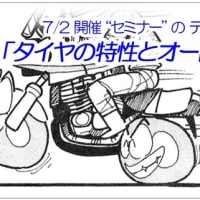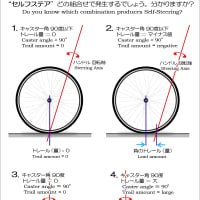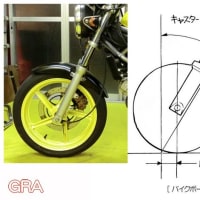sources : MotorTrend
https://x.gd/YakYc
メルセデスベンツ、EV(電動車)のブレーキを、従来車両の様に各車輪全てに装着せず、モーター駆動輪の中央に装着して、軽量化と乗り心地の向上、空気抵抗の低減を狙っています。
Mercedes-Benz aims to reduce weight, improve ride comfort and reduce aerodynamic drag by mounting the brakes of EVs (electric vehicles) in the middle of the motor-driven wheels, instead of on all the wheels as in conventional vehicles.
世界的にEV販売の勢いが衰える中、自動車メーカー各社は EV戦略の見直しを迫られ、その上、テスラの元幹部2名によってスウェーデンに設立された EV用バッテリー製造会社・ノースボルト が、中国のバッテリーメーかーに対する競争力が得られずに破産するなど、欧州の自動車メーカーは EV戦略を変更しています。メルセデスベンツも同様で、2030年までに新車販売の全てを EV にするとしていましたが、2024年2月、PHEV(プラグインハイブリッド車)の販売も目指すとして当初の目標を撤回しています。
なお、ブレーキを中央に集約する設計の理由は、通常、EV での減速(ブレーキ)はその 98% をモーターによる回生ブレーキ(減速エネルギーで発電)が担っており、残り 2% が従来の物理的ブレーキが担当する事になるからとしています。そして、各車輪毎にブレーキを装着しない事によってバネ下重量を低減させる事ができ、乗り心地やロードホールディング(路面追従性)が高められる他、ホイールおよびホイールハウス内に冷却風を導く必要が無いので空気抵抗も低減でき、省燃費・省エネ・サスティナブルなど社会的要求にも対応出来ます。
先日、世界的に有名なブレーキメーカー・ブレンボが、二輪用サスペンションダンパーメーカーのオーリンズを買収した報道がありましたが、これも、EV時代に ブレーキ専業では閉塞感が強く、脚周り全体を EVメーカー各社へ提案できる会社へと変革する為だったと思えます。
なお、僕の個人的な推測では、より高性能を目指す車両には各車輪毎にモーターを内蔵する “インホイールモーター” 形式が進むと思いますが、その際には、各モーター毎に装着される物理的ブレーキも小型化され、いずれモーター内部に埋め込まれてしまうと思います。 これは 電動おーとばいも同じで、前後ホイールにモーターを内蔵する 二輪駆動車 がスポーツ用トップモデルになると期待していますし、その頃には ブレーキ という概念は、ディスクローターの有無ではなく、ブレーキレバー(ペダル)だけに残るのかも知れません。
**************
As global EV sales momentum wanes, automakers are forced to rethink their EV strategies, and on top of this, Northvolt, an EV battery manufacturer founded in Sweden by two former Tesla executives, has gone bankrupt after failing to gain a competitive edge over Chinese battery makers. European automakers are changing their EV strategies. Mercedes-Benz is no exception, as the company had stated that all new cars it sold would be EVs by 2030, but in February 2024 it withdrew its original target, saying it was also aiming to sell PHEVs (plug-in hybrids).
The reason for the centralised brake design is that 98% of the deceleration (braking) in EVs is normally carried out by regenerative braking by the motor (which generates electricity from deceleration energy), while the remaining 2% is handled by the conventional physical brake. The absence of brakes on each wheel reduces the unsprung weight, improves ride comfort and road holding, and reduces air resistance as cooling air does not need to be directed to the wheels and wheel housings. This also helps to meet social requirements such as fuel efficiency, energy saving and sustainability.
The recent acquisition of motorcycle suspension damper manufacturer Öhlins by world-renowned brake manufacturer Brembo was reported as another example of the company's desire to transform itself into a company capable of offering the entire suspension system to EV manufacturers, as a brake specialist in the EV era feels too closed-minded to do so.
My personal guess is that the ‘in-wheel motor’ format, in which a motor is built into each wheel, will be used in vehicles that aim for higher performance, and in that case, the physical brake attached to each motor will also be downsized and eventually embedded in the motor. This is also the case with the electric ootbai. I expect that the same will happen with electric-o-tubes, with two-wheel drive vehicles with motors built into the front and rear wheels becoming the top model for sports use, and by that time the concept of brakes will probably remain only in the brake lever (pedal), not in the presence or absence of disc rotors.






















※コメント投稿者のブログIDはブログ作成者のみに通知されます